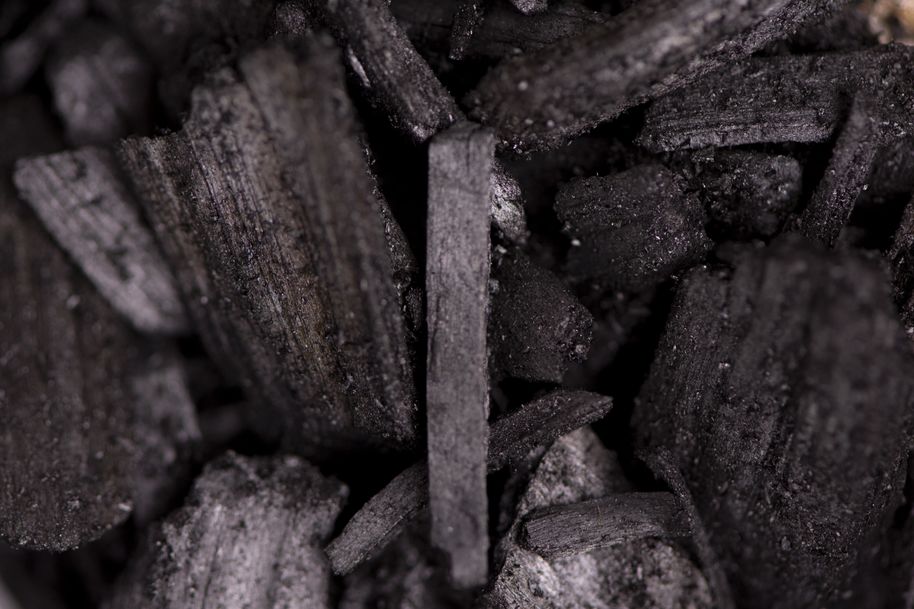Biochar - the future of the forest industry?

Climate change mitigation requires rapid reduction of emissions of greenhouse gases and decisive efforts to draw down and sequester atmospheric CO2. While technologies for reducing emissions in energy production have matured and are diffusing rapidly, carbon drawdown and sequestration remains a narrow discussion amongst experts and policymakers. Mobilization of further actors in carbon drawdown is needed.
Biochar, a black, coal-like product may not seem a promising start for climate change mitigation. However, the making of biochar and using it as soil amendment, has been suggested to be one of the most cost effective and readily available technologies to sequester carbon. Compared with carbon capture and storage (CCS), biochar processes are safe, relatively simple and are easily scalable. In biochar production, organic matter, including waste streams from agriculture and forestry are pyrolyzed in low oxygen environments. In this way roughly half of the carbon content of the biomass is retained in a very stable form. Once in such a form, this carbon can be deposited in soils to sequester carbon, improve soil productivity and gradually increase soil organic matter. This helps reverse the historical development of carbon losses from organic matter in topsoil, which is responsible for much of the excess CO2 in the atmosphere.

Is there demand for biochar? Agricultural lands globally suffer from the loss of topsoil, and the use of biochar also has long historical roots in agriculture. Markets appear vast and the potential for carbon sink very promising. It has been estimated that four per mil annual increase in soil organic matter in agriculture can make a significant contribution to climate change mitigation (www.4p1000.org). Not only agriculture actors, but also cities are interested. Helsinki is following international developments and is trialing the use of biochar in urban parks, in a demonstration area at Jätkäsaari (see www.aalto.fi/fi/carla)
Why should the forest industry be excited? Alternative carbon sequestration options exist through altering the management of forests. If forests are to directly serve as a carbon sink, the carbon stock can surely accumulate through postponed logging and far more extensive standing stock of trees compared with current practices. Yes, growth will saturate at some point but considering the urgent need of climate change mitigation, forests could be managed to high yield and high stock of carbon. Yet, watch out for forest fire as they threaten this stock. Watch out also for a backlash of a lumber-hungry industry.
Is there demand for biochar? Agricultural lands globally suffer from the loss of topsoil, and the use of biochar also has long historical roots in agriculture. Markets appear vast and the potential for carbon sink very promising. It has been estimated that four per mil annual increase in soil organic matter in agriculture can make a significant contribution to climate change mitigation (www.4p1000.org). Not only agriculture actors, but also cities are interested. Helsinki is following international developments and is trialing the use of biochar in urban parks, in a demonstration area at Jätkäsaari (see www.aalto.fi/fi/carla)
Why should the forest industry be excited? Alternative carbon sequestration options exist through altering the management of forests. If forests are to directly serve as a carbon sink, the carbon stock can surely accumulate through postponed logging and far more extensive standing stock of trees compared with current practices. Yes, growth will saturate at some point but considering the urgent need of climate change mitigation, forests could be managed to high yield and high stock of carbon. Yet, watch out for forest fire as they threaten this stock. Watch out also for a backlash of a lumber-hungry industry.

Biochar production is an industrial process which is compatible with current forestry practices. It could even lead to more intensive management and more frequent harvest. Pyrolysis, the process of making biochar yields heat and side streams usable for green chemistry. It is, in short, a process industry on par with pulp and paper making, and it is based on the very same principles of intensive forest management. Skills, equipment and even mental models of the current forest industry would be useful in a biochar industry. This new industry could hence also inherit problems of the old regime. Intensive forest management and optimization of productivity should be in balance with the view of old-growth forests as alternative carbon sinks. These siblings of the new era of the primacy of carbon sequestration in forest management appear very different.
What keeps biochar from triumphing? The economic value is only pending. There is thus far too little evidence of increased soil productivity; the material fractions for green chemistry need to meet with technical qualifications and the demand for sustainable alternatives for an oil-based chemistry should be nurtured. The value of sequestered carbon is also just pending. The price of ton CO2 in EU emission trading has recently remained between 20 and 30 euros per ton. This is not far from the value of wood raw material for the pulp and paper industry. In other words, with technological developments and policy efforts directed at climate change mitigation, biochar production is a likely component of the forest industry value chains in the future. Meanwhile, markets need a push. Would this be a carbon overhead? Of all harvest, a percentage needs to go directly to carbon deposits. Let’s settle a figure to start with!






